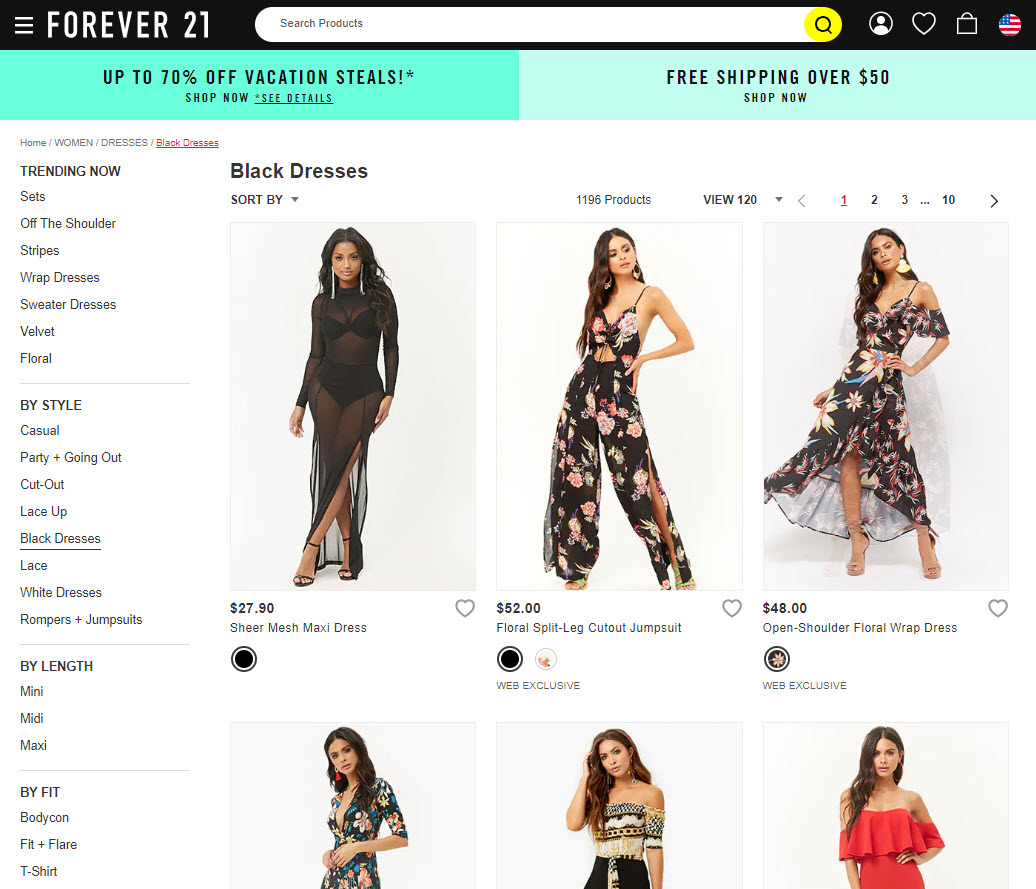Natural search performance on ecommerce sites often suffers from an invisible problem: a missing torso.
For search engine optimization, a “torso” describes keywords that drive too many searches to be called long tail but not enough to be called head terms. A meaty torso contains keywords that each drive thousands of searches per month.
In some cases, sites lack the ability to drive natural search visits and revenue through faceted search-created pages that would otherwise target mid-value search phrases. Harnessing those facets to drive revenue can be a competitive advantage in your search strategy.
For example, “dresses” is a head term. “Calvin Klein long black ruched dress” is a long tail.
But in the middle are keywords, such as “long black dress” and “black maxi dress,” that represent 33,000 and 27,000 searches per month in the U.S. respectively, according to Google Keyword Planner.
That’s 60,000 searches a month for products that women’s fashion retailers would presumably have on their digital shelves. So why not make them available to shoppers in search results?

Google Keyword Planner shows high value for searches related to “black dress.”
The Meaty Torso
The problem is that facets are usually rendered uncrawlable, either because the technology used to create them isn’t accessible to search engine crawlers or because the business has made them uncrawlable purposely.
For example, apparel retailer Express ranks number one in Google for a search on “dress.” But it’s nowhere to be found for pages that require the shopper to choose a facet like “long black dress” and “black maxi dress.” Express has used a canonical tag to instruct Google not to index its faceted navigation pages, which removes the possibility of ranking for those pages, and thus for those keywords.
Conversely, Macy’s allows crawlers access to faceted pages with up to two filters applied. Thus Macy’s ranks in the top three in Google for “black dress,” and number one for “long black dress” and “black maxi dress.” Macy’s will therefore likely win a large portion of 60,000 clicks from search results, and the chance to sell to thousands of searching shoppers.

Macy’s offers crawlable faceted pages — “Black Long Dresses” — to search engine bots.
And that’s just one example. The power of faceted search for marketers lies in its ability to scale, to produce pages targeted at exactly the combination of product attributes that searchers are looking for.
Cutting off search engine access to your faceted navigation removes the possibility that you’ll rank — and drive revenue — for thousands of keyword combinations already found within your site naturally.
Manual Page Creation
Some sites take a manual approach and create pages for specific keywords. Forever21.com has added “Black Dresses” in its style navigation as a subcategory, outside of the faceted navigation.

Forever 21’s black dresses page is not part of its faceted search.
There’s nothing wrong with this approach — in fact, Forever21.com ranks number one in Google for searches for “black dresses” — but the strategy is not scalable. In doing it manually, one-by-one, the company limits the number of keyword targets it can hit by the capacity of staff.
Imagine all the pages you’d need to create and merchandise to target specific keywords to make a difference in revenue. Managing this process scalably through the judicious use of technology such as crawlable faceted search is more likely to boost revenue across a much wider array of searches.
Skinny Torso?
The best way to know if your torso is too skinny is to compare your keyword research to the keyword analytics in Google Search Console, recognizing that keyword data is restricted to a less-than-10-percent sampling these days.
Look for areas that drive high demand in your keyword research but don’t drive clicks in Search Console. Focus on the ones that represent facets within your navigation.
For example, Macy’s offers dress facets by size, age, occasion, brand, length, sleeve length, style, color, and more. Some of those, such as size, won’t drive measurable keyword demand. But others — such as color, length, and occasion — will have a high demand and, thus, high potential impact on performance.
Only your keyword research can tell you which areas are most valuable when taken in aggregate — when you sum up all of the similar keyword attributes such as color and length. Those areas could have many lower-value keywords that add up, collectively, to a large number. You’ll likely miss them by focusing on individual keywords with higher value.




